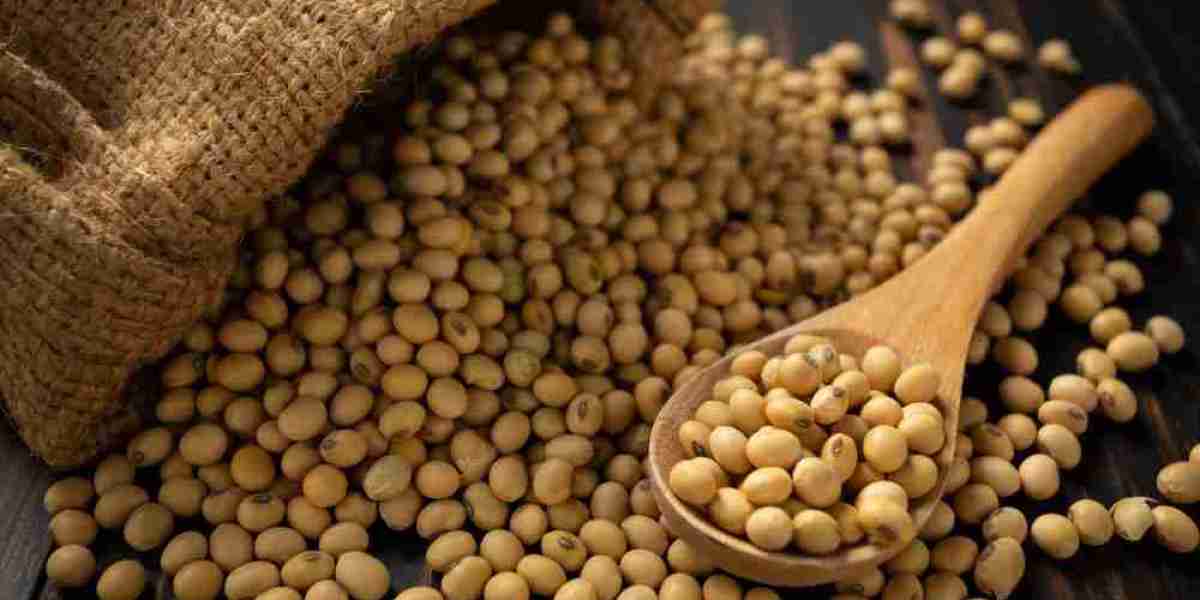Soybean, a versatile legume, has emerged as a crucial component of India's agricultural landscape, playing a pivotal role in the nation's economy and food security. Let's delve into the significance of soybean production in India and its multifaceted impacts.
Historical Context of Soybean Farming in India
Soybean cultivation in India has a rich history that dates back to the mid-20th century when it was first introduced to the country. This introduction marked the beginning of a journey that would see soybean emerge as a promising crop with vast potential for both domestic consumption and export.
Early Beginnings
In the mid-20th century, Indian agriculture was undergoing a period of transformation, characterized by efforts to diversify crops and enhance agricultural productivity. It was during this time that soybean, originally native to East Asia, found its way to Indian shores. The initial introduction of soybean sparked curiosity among farmers and agricultural scientists alike, who recognized its potential as a valuable addition to India's agricultural landscape.
As pioneers began experimenting with soybean cultivation, it became evident that the crop thrived in certain agro-climatic conditions prevalent in regions across the country. The adaptability of soybean to diverse soil types and climatic conditions laid the foundation for its widespread cultivation in India.
Growth and Development
Over the decades, soybean farming in India has undergone significant growth and development, driven by various factors that have propelled its expansion across the agricultural landscape.
Advancements in agricultural practices, including improved seed varieties, mechanization, and irrigation techniques, have played a pivotal role in enhancing soybean yields and productivity. Farmers have embraced modern farming technologies and practices, leveraging them to optimize crop management and maximize returns from soybean cultivation.
Increased awareness about the nutritional benefits of soybean has also contributed to its growth. As consumers became more health-conscious and sought alternative sources of protein, the demand for soy-based products surged. This growing demand not only stimulated domestic consumption but also opened up new avenues for soybean export, positioning India as a key player in the global soybean market.
Current Scenario of Soybean Production
Major producing regions
India's soybean belt primarily encompasses states like Madhya Pradesh, Maharashtra, Rajasthan, and Uttar Pradesh, which collectively contribute to the lion's share of the nation's soybean output.
Trends and statistics
The production of soybean in India has experienced fluctuations influenced by factors such as weather patterns, market demand, and government policies. However, it remains one of the leading oilseed crops cultivated in the country.
Importance of Soybean in Indian Agriculture
Soybean holds immense importance in Indian agriculture due to its economic significance and nutritional value. Let's delve into why soybean cultivation is vital for India in both these aspects.
Economic Significance
Soybean cultivation serves as a lifeline for millions of farmers across India, particularly in rural areas. The crop offers a reliable source of income, thereby playing a crucial role in sustaining rural livelihoods. By engaging in soybean farming, farmers can generate revenue throughout the year, contributing to their financial stability and overall economic well-being.
Moreover, soybean cultivation contributes significantly to India's agricultural economy. The crop's versatility allows for various uses, from food products to industrial applications, thereby fostering growth and diversification within the agricultural sector. As a cash crop, soybean enhances farmers' purchasing power, enabling them to invest in inputs, equipment, and other resources essential for agricultural production.
Furthermore, the income generated from soybean cultivation has ripple effects throughout the economy. Increased agricultural income leads to higher consumer spending, stimulating demand for goods and services in rural areas. Additionally, it encourages investment in rural infrastructure, such as roads, schools, and healthcare facilities, thereby fostering overall economic development and reducing disparities between urban and rural regions.
Nutritional Value
Beyond its economic significance, soybean is prized for its exceptional nutritional profile, making it a valuable component in both human and livestock diets. Rich in protein, essential amino acids, vitamins, and minerals, soybean serves as a vital source of nutrition, particularly in regions where access to diverse food sources is limited.
For humans, soybean and its derivatives, such as soy oil and soy meal, play a crucial role in addressing protein deficiencies and meeting dietary requirements. Soy-based foods, including tofu, soy milk, and tempeh, offer nutritious alternatives to animal-derived products, catering to vegetarian and vegan diets while providing essential nutrients for overall health and well-being.
In the livestock sector, soybean meal serves as a key ingredient in animal feed formulations, providing high-quality protein for poultry, livestock, and aquaculture. By incorporating soybean meal into animal diets, farmers can enhance growth rates, improve feed efficiency, and ensure optimal health and productivity in their livestock operations.
Moreover, soybean cultivation promotes sustainable agriculture practices, such as crop rotation and nitrogen fixation, which contribute to soil fertility and environmental conservation. By integrating soybean into cropping systems, farmers can enhance soil health, reduce reliance on synthetic fertilizers, and promote long-term sustainability in agricultural production.
Challenges and Constraints
Pest and disease management
Soybean cultivation faces challenges from pests and diseases, necessitating effective pest management strategies and disease-resistant varieties to mitigate yield losses.
Market fluctuations
The volatility of global markets and price fluctuations pose challenges to soybean farmers, highlighting the need for risk management mechanisms and market diversification strategies.
Government Initiatives and Policies
Support programs
The government of India implements various schemes and programs to support soybean farmers, including subsidies on inputs, credit facilities, and price support mechanisms.
Subsidies and incentives
Incentives such as minimum support prices (MSPs) and procurement support ensure that farmers receive remunerative prices for their produce, thereby incentivizing soybean cultivation.
Technological Advancements
Mechanization
The adoption of modern agricultural machinery and equipment has enhanced the efficiency and productivity of soybean farming operations, reducing labor requirements and production costs.
Biotechnology
Advancements in biotechnology have led to the development of genetically modified (GM) soybean varieties with traits such as herbicide tolerance and insect resistance, offering farmers new tools to combat challenges and improve yields.
Environmental Impact
Sustainability practices
Efforts are underway to promote sustainable soybean cultivation practices, including conservation agriculture, water management techniques, and integrated pest management (IPM) approaches, to minimize environmental degradation and promote long-term soil health.
Soil health management
Soybean cultivation contributes to soil fertility through nitrogen fixation, crop rotation benefits, and organic matter addition, thereby supporting overall soil health and ecosystem resilience.
Future Prospects
Growth potential
The future of soybean production in India appears promising, with opportunities for expansion into new regions, adoption of innovative technologies, and diversification into value-added products.
Emerging opportunities
Rising demand for soy-based products in domestic and international markets, coupled with increasing consumer awareness about health and sustainability, presents lucrative opportunities for the soybean sector to thrive and evolve.
Conclusion
Soybean production holds immense importance in India's agriculture, offering a sustainable source of income for farmers, valuable nutrition for consumers, and significant contributions to food security and economic growth. Despite challenges, the sector continues to evolve, driven by technological advancements, supportive policies, and growing market opportunities, positioning soybean as a key player in India's agricultural landscape.
FAQs (Frequently Asked Questions)
1.Is soybean cultivation profitable in India?
Yes, soybean cultivation can be profitable, especially with proper management practices and market awareness.
2.What are the main obstacles soybean producers must overcome?
Soybean farmers often face challenges such as pest infestations, diseases, market price fluctuations, and weather uncertainties.
3.Are there any government schemes to support soybean farmers?
Yes, the government of India implements various schemes and programs aimed at supporting soybean farmers, including subsidies, credit facilities, and price support mechanisms.
4.How does soybean cultivation impact the environment?
Sustainable soybean cultivation practices can have positive environmental impacts, including soil fertility improvement, carbon sequestration, and biodiversity conservation.
5.What are the prospects for genetically modified (GM) soybeans in India?
Genetically modified soybean varieties offer potential benefits in terms of pest resistance, weed management, and yield enhancement, although their adoption is subject to regulatory approvals and public acceptance.
To Get Real-Time price of Soybean Visit: https://pricevision.ai/
Source: https://diigo.com/0w5f4q



